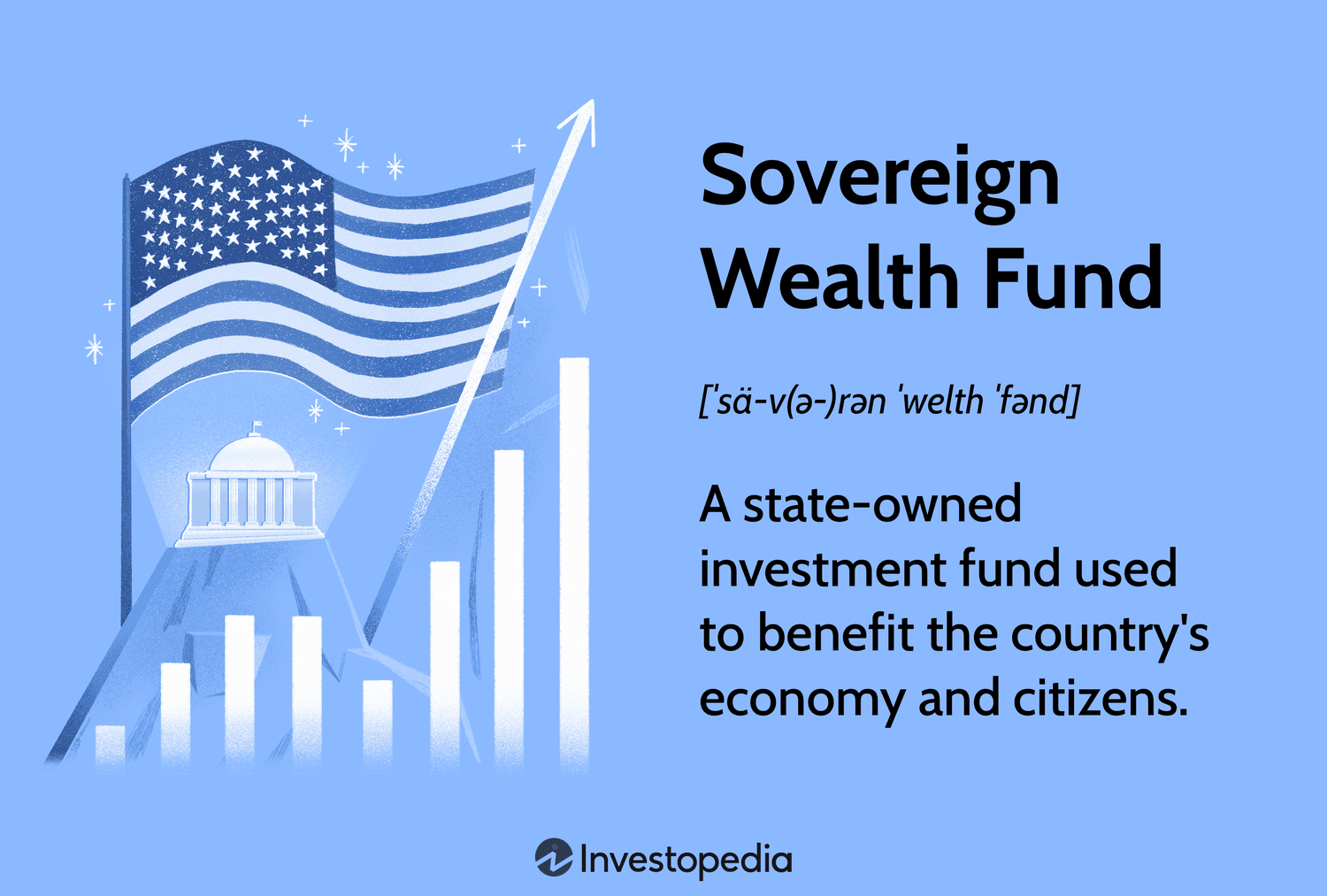 illustration from Investopedia
illustration from Investopedia
Sovereign Wealth Funds: An In-Depth Look and Global Examples
Sovereign Wealth Funds (SWFs) are like national piggy banks, but instead of coins, they hold investments worth billions! They're managed by governments to boost their economies or save for the future. Let's explore what makes them tick, with real-world examples.
Understanding Sovereign Wealth Funds
What is a Sovereign Wealth Fund?
Think of a Sovereign Wealth Fund as a government's investment arm. Unlike pension funds or central banks, SWFs have diverse goals:
- Stabilization: Smoothing out the bumps when commodity prices (like oil) go wild.
- Savings for Future Generations: Putting away money for when the oil runs out, or to support future citizens.
- Economic Development: Investing in local projects to create jobs and growth.
- Reserve Investment: Making more money from foreign reserves than just keeping it in a vault.
SWFs get their cash from government surpluses – extra money from resources, trade, or selling off state-owned assets. Some are small, others are gigantic!
Origins and Evolution of SWFs
The first SWF was arguably the Kuwait Investment Authority (KIA), set up in 1953 to manage Kuwait's oil riches. Others followed in resource-rich countries like Singapore and Gulf states.
SWFs exploded in popularity in the 2000s, fueled by rising commodity prices. They started investing heavily around the world, buying stakes in companies and real estate.
Objectives and Investment Strategies
What an SWF aims for dictates how it invests. Stabilization funds play it safe with liquid assets, while long-term savings funds take more risks with stocks, private equity, and property.
Typical SWF strategies include:
- Diversification: Spreading money across different assets and countries to minimize risk.
- Long-Term Investing: Thinking decades ahead, ignoring short-term market ups and downs.
- Active Management: Hiring pros to pick investments and manage risk.
- Alternative Investments: Diving into private equity, hedge funds, and infrastructure for potentially higher returns (but also higher risk).
Some SWFs also invest in their own country to boost the local economy.
Examples of Sovereign Wealth Funds Around the World
Let's look at some star SWFs:
Norway: Government Pension Fund Global (GPFG)
The GPFG is the world's biggest SWF, worth over $1.4 trillion! It was created in the 1990s to save Norway's oil money for the future.
Objectives: Save oil revenue for future generations, following strict ethical guidelines, and invest globally.
Investment Strategy: Invests in stocks, bonds, and real estate worldwide. It's known for transparency and ethical investing, avoiding companies involved in tobacco, weapons, or environmental damage.
Impact: Stabilizes Norway's economy and secures its financial future. It's a major player in global markets.
Singapore: GIC Private Limited and Temasek Holdings
Singapore has two SWFs: GIC (manages foreign reserves) and Temasek (focuses on strategic investments).
GIC Objectives: Preserve and grow Singapore's international buying power.
GIC Investment Strategy: Invests globally in stocks, bonds, real estate, and private equity for long-term, sustainable returns.
Temasek Holdings Objectives: Create long-term value for Singapore.
Temasek Holdings Investment Strategy: Invests in companies with strong growth potential in Singapore and abroad, actively working to improve their performance.
Impact: Both are crucial for Singapore's economic stability and growth, with a reputation for smart investing.
China: China Investment Corporation (CIC)
CIC is China's SWF, created in 2007 to manage foreign exchange reserves. It's one of the largest in the world.
Objectives: Achieve long-term returns on China's foreign exchange reserves.
Investment Strategy: Invests globally in stocks, bonds, private equity, real estate, and infrastructure in developed and emerging markets.
Impact: A key player in the global economy, promoting China's economic interests.
United Arab Emirates: Abu Dhabi Investment Authority (ADIA)
ADIA manages Abu Dhabi's surplus oil revenues and is one of the largest SWFs.
Objectives: Preserve and grow Abu Dhabi's wealth for future generations.
Investment Strategy: Invests globally in a wide range of assets with a long-term focus, known for expertise in alternative investments.
Impact: A key player in the global economy, supporting Abu Dhabi's economic diversification.
The Impact and Controversy Surrounding SWFs
Economic Impact
SWFs can influence asset prices, capital flows, and corporate governance. They can boost economic growth, but some worry they might distort markets or be used for political purposes.
Transparency and Governance
Transparency is key. Many SWFs have been criticized for a lack of openness. The Santiago Principles promote transparency, but not all SWFs follow them.
Geopolitical Concerns
Some worry SWFs could be used to influence other countries or acquire strategic assets. This has led to investment restrictions in some sectors.
The Future of Sovereign Wealth Funds
SWFs are here to stay and will likely grow as global wealth increases.
Their future depends on:
- Global Economic Conditions: Growth, inflation, and interest rates.
- Geopolitical Developments: Political stability and trade relations.
- Regulatory Environment: Government policies.
- Technological Innovation: AI and blockchain.
SWFs need to adapt to succeed, improve transparency, and engage with stakeholders.
Conclusion
SWFs are powerful players in the global financial system, managing huge sums for governments. They offer benefits but also raise concerns. Understanding them is crucial for anyone interested in the global economy.
Want to learn more about managing your finances? Contact a financial advisor today!
Published on March 8, 2025
reference: https://www.imf.org/external/np/seminars/eng/2008/swfs/pdf/kluge.pdf, https://www.ifswf.org/
Gema
Wordsmith and content writer passionate about creating high-quality content that informs, entertains, and inspires. Let me bring your brand's story to life.
All stories by : Gema

0 Comments